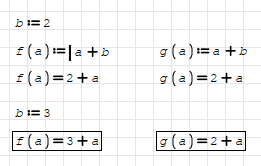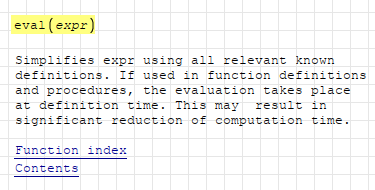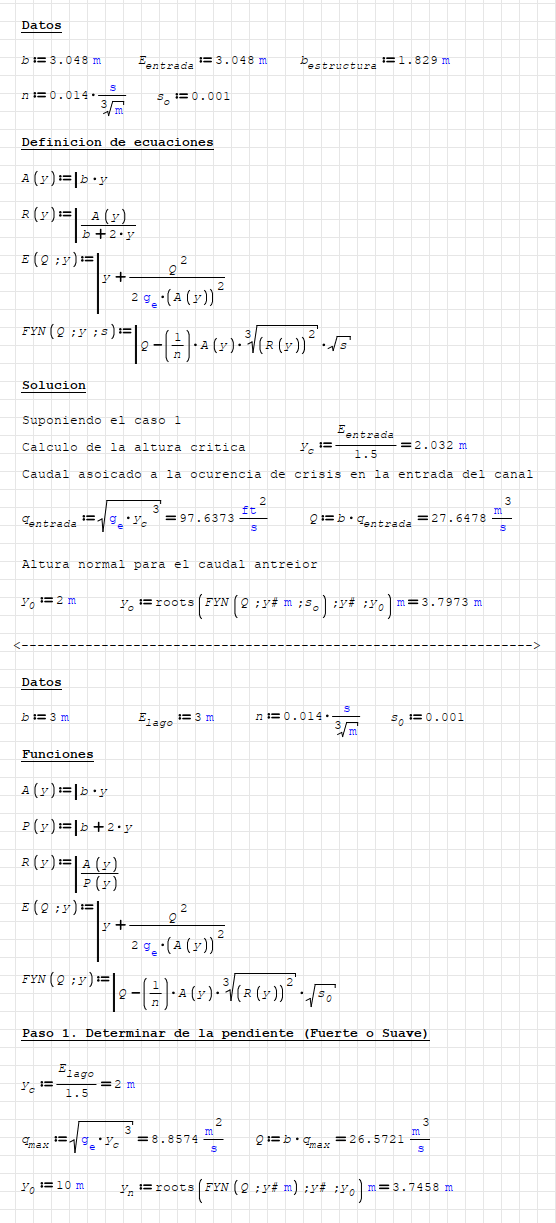Code Mathcad to Smath - Сообщения
Файл не найден.Файл не найден.
WroteI need to pass these codes that are in Mathcad Prime to Smath, does anyone know how I can do it ?
Make your MCDX compact/readable not a scratch sheet.
If not too long, make an image, some will inspect.
WroteI need to pass these codes that are in Mathcad Prime to Smath, does anyone know how I can do it?
Файл не найден.Файл не найден.
WroteWroteI need to pass these codes that are in Mathcad Prime to Smath, does anyone know how I can do it ?
Make your MCDX compact/readable not a scratch sheet.
If not too long, make an image, some will inspect.
I don't have the MCDX, I only have the pdf.
WroteI don't have the MCDX, I only have the pdf.
In this case, only manually.
WroteWroteI don't have the MCDX, I only have the pdf.
In this case, only manually.
But the programming is the same in Smath? I mean, for example the FYN or root function still works?
WroteBut the programming is the same in Smath ?
I mean, for example the FYN or root function still works ?
Smath has many solvers. FYN from implicit roots(,,,).
roots will solve on the canvas [MACH number]
calculo Direct Code.sm (20,59 КиБ) скачан 647 раз(а).
WroteSmath has many solvers. FYN from implicit roots(,,,).
roots will solve on the canvas [MACH number]
calculo Direct Code.sm (20,59 КиБ) скачан 647 раз(а).
So you simply reposted my answer?
WroteSo you simply reposted my answer ?
Not exactly, not case of transit via local definition.
Take care ... Jean.
Spline De Boor [Colibri].sm (34,26 КиБ) скачан 527 раз(а).
Bessel J0,Y0.sm (22,12 КиБ) скачан 639 раз(а).
You just rename y# to y.
And deleted line()'s.
What a cheap act.
Side by side comparison:
WroteYes, they are same.
You just rename y# to y.
And deleted line()'s.
What a cheap act.
# not needed, crowds document
Not a case of local definition, crowds/confuses new Smath user
As you offered, Smath looks weird.
End of it.
WroteNot a case of local definition, crowds/confuses new Smath user
I have deliberately put to show as it will be calculated.
Variable can be named whatever user wants by the way.
I am sure Lelar is not confused, as he is a new user.
Variable names doesn't crowd/confuse smath users.
Your "silent unit" crap confuses new users, crowds topics.
Your "non related" replies confuses new users, crowds topics.
Your "posting same reply for 4 times" confuses new users, crowds topics.
Your "color racket worksheets" confuses new users, crowds topics.
Maybe off topic between overlord and Jean Giraud's conversation, but what's the difference between a function definition with line() and a definition with line() removed? Will there be a difference on how SMath calculates it?
Cheers.
Welcome to Smath Community ... Jean.
chito.sm (51,93 КиБ) скачан 630 раз(а).
Wrote...but what's the difference between a function definition with line() and a definition with line() removed? Will there be a difference on how SMath calculates it?
There will be a difference, a huge one actually.
When a variable is defined before function,
and that variable is used inside the function,
if line is used, variable redefine shall effect result.
if not used, variable redefine won't effect the result of function.
Which mostly we don't want not effecting, so using line() is better.

I mostly define function variables with unique naming. (# after variable for example)
So common used variable names won't effect function results.
This is my habit and I think it is a useful one.
This naming doesn't crowd pages or confuses people.
It is minimizing calculation errors caused by author.
f(x#;y#):=x#^2+2*y#
Best regards
WroteIn short line | is a descending dependent collection.
Welcome to Smath Community ... Jean.
Thank you for the very warm welcome, Jean.
Is there a reason why Dy is within in eval()? I tried removing it in the function and the result looks the same.
Wrote
if line is used, variable redefine shall effect result.
if not used, variable redefine won't effect the result of function.
Which mostly we don't want not effecting, so using line() is better.
I think this is a very important point that I need to keep in mind. Using unique names in functions is also a great suggestion. Thank you overlord.
Cheers.
WroteThank you for the very warm welcome, Jean.
Is there a reason why Dy is within in eval()?
I tried removing it in the function and the result looks the same.
Two typos in your 'chito' document: Manilla, Kota Kinabalu in Sabah.
You are right, no need to Dy:=eval(,) is so fast.
eval(,) applies to parse result as a numeric entity.
It breaks the chain calculation. Per application experimental.
The rule eval(,) is crucifying ... watch the demo attached.
from 65 s down to 0.015 s !!!
Take care ... Jean
Maths eval(,) TEST.sm (19,27 КиБ) скачан 620 раз(а).
Wroteeval(,) applies to parse result as a numeric entity.
In simple words, the kernel is a vector of calculated from what to calculate.
In this example, the last that will be calculated is eval([R G B])
It gains 1 min [3/4].
Cheers ... Jean.
Pattern Etoile Magic [Short].sm (81,1 КиБ) скачан 533 раз(а).
WroteIs there a reason why Dy is within in eval()?
eval() makes computations faster most of time.
Very minor times, may have no effect or slows the calculation.
It would be wise to choose where and when to use it.

WroteI think this is a very important point that I need to keep in mind. Using unique names in functions is also a great suggestion. Thank you overlord.
Well thank you, glad if I could help.
There are some other tricks to remember as well.
Here is list of which come to my mind at this instant;
- symbolic/numeric optimization
most errors can be parsed with selecting the right one - Δ temperatures (Δ°C, Δ°F, Δ°Re)
- not using units for some solvers {solve(), roots()}
or using multiplications at right place to trick solver as value is unitless - using maple() or maxima() for most symbolic results (better support)
- smath vectors/matrices starts with 1, mathcad starts with 0
some new users troubles with converting mathcad functions to smath - recursive functions shall give an error after 50 steps
better not to use it, try to wrtie algorithms conventional way - eval() for faster calculations
- line() for functions (not needed always)
- to be careful for variable names
- choosing right plot for the right job
- Новые сообщения
- Нет новых сообщений

